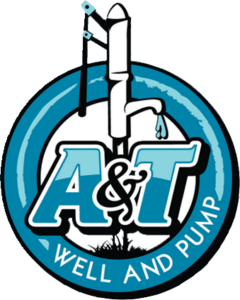Our team specializes in comprehensive well maintenance services. With our expertise and attention to detail,…
Water wells are a vital resource for countless homeowners, yet many wonder: can a water well run dry?
The short answer is Yes; but in most cases, it’s rare for well water to dry up permanently.
Whether you're a long-time well owner or new to managing your own water supply, this guide from our Raleigh water well service team provides essential insights to help you keep your well operating efficiently for years to come.
Join us as we unravel the science behind your well’s water supply and explore the factors that can lead to a temporary or even permanent drop in water levels.
Can a Water Well System Really Run Dry?
Short Answer: YES.
A water well can indeed run dry when the water level drops below the point where the water pump draws water, a condition often referred to as "running dry." This typically occurs when the groundwater supply diminishes—whether due to seasonal changes, overuse, or mechanical issues—causing the water level to fall beneath the intake.
However, it's important to note that a dry well isn’t necessarily a permanent condition. With proper water conservation and maintenance methods, many water wells can recover as deeper confined aquifers naturally recharge over time.
Understanding How Water Wells Work
Understanding how water wells work is key to appreciating the natural process that delivers water to your home. By understanding the science behind water table aquifers, you can better understand how your well remains a reliable resource for drinking water and other household needs over time.
The Role of Groundwater Aquifers
When drilling a new well to tap into groundwater aquifers—natural reservoirs that store a significant portion of our planet's freshwater. These aquifers are essentially porous layers of rock or sediment that explore alternative water sources, rainwater harvesting, and surface water sources for fresh water delivery to your home.
When you draw water from your well, you’re accessing this vast underground reservoir that replenishes your water supply over time.
What Exactly is an Aquifer?
Contrary to popular belief, aquifers are not underground rivers but permeable rock formations that allow water to seep through. This slow filtration process acts as a natural filter, helping to trap impurities and maintain water quality.
As water moves through an aquifer, it gathers essential minerals while leaving behind many contaminants, ensuring that the water drawn from your well is both clean and safe.
Causes of a Well Running Dry
When a well runs dry, it means the water level has dropped below the submersible pump’s intake, interrupting your water supply. Several factors can contribute to this condition, each affecting your well’s performance in different ways.
Seasonal Changes and Drought Conditions
Seasonal changes and prolonged droughts can significantly reduce groundwater levels, leading to a temporary drop in water availability. During dry spells, reduced rainfall means the aquifer recharges at a slower rate, which can result in the well running dry.
Over-Pumping and High Water Demand
When water is drawn from a well at a rate that exceeds the aquifer's natural recharge, the water level can fall below the pump’s intake. High water demand, especially from multiple users tapping the same aquifer, intensifies this effect.
Leaks in the System
Leaks in the pipes between the well pump and the pressure tank can waste precious water and contribute to a drop in the overall water level. Even small leaks, if left unattended, can gradually deplete the available water faster than anticipated.
Sediment Buildup and Aging Wells
As wells age, sediment can accumulate, which may obstruct water flow and reduce the well taps from yielding crystal clear water. This buildup can not only affect the pump’s performance and the performance of the well's electrical system but also contribute to a drop in water levels.
Temporary Versus Permanent Well Dryness
When a well runs dry, it doesn't necessarily mean it's a permanent condition. Understanding the difference between temporary and permanent dryness can help you determine the right steps to take, whether it's waiting for the aquifer to recharge or exploring other solutions.
Can a Well Run Dry Temporarily?
Temporary well dryness occurs when the water depth in the well drops below the pump’s intake for a short period. This condition is often the result of seasonal fluctuations, drought, or a sudden spike in water usage that outpaces the aquifer's natural recharge. With time and proper water conservation, many wells recover as the groundwater level is restored, allowing the pump to function normally again.
Can a Well Run Dry Permanently?
Permanent well dryness is a rare but serious situation where the well fails to produce water due to long-term depletion of the aquifer or structural issues within the well itself. This can occur if the well drilling company did not drill deep enough to reach a sustainable water source, or if excessive pumping over an extended period has permanently lowered the water table.
In cases of permanent dryness, a well may require rehabilitation, deepening, or even well replacement services by a professional to restore a reliable water supply.
Warning Signs of a Water Well Running Dry
Monitoring your water well for early warning signs is crucial to prevent prolonged dryness and potential damage. By keeping an eye on specific indicators, you can take timely action to address issues before they escalate into more serious problems.
Drop in Water Pressure
One of the most common early signs that your well might be running dry is a decrease in water pressure. A weakened water flow can signal that the water level is falling below the pump’s intake or that the aquifer is not replenishing as expected.
If you notice a consistent drop in pressure, it may be time to investigate further and consider a professional video well inspection.
Unusual Noises
Another indicator is a change in the well pump's behavior, including irregular operation or the emergence of unusual sounds. When the water pump struggles to draw water, it may start to run louder or exhibit erratic cycling, both of which are signs that the water level could be too low.
Sputtering Faucets
A sputtering or inconsistent water flow from your faucets may also signal that your well is running dry. This erratic performance typically occurs when the water supply is unstable, causing the pump to draw from an increasingly depleted source.
If your water flow becomes unpredictable, it is a clear warning directly influenced by your well’s condition. It's important to address this before future issues arise or worsen.
Longer Wait Times for Water Recovery
An extended period between water usage and a full recovery of water pressure can be a subtle yet telling sign that a problem exists. If it takes noticeably longer than usual for your well to return to optimal water pressure after heavy usage, it might indicate that the aquifer is struggling to recharge.
Potential Damages Caused by a Dry Well
When a well runs dry, the impact can extend beyond just a temporary loss of water supply. Operating a well water pump without water not only disrupts daily routines but can also lead to a cascade of damages that may compromise your entire water well system.
Here are some potential damages caused by a dry well:
- Pump Damage and Burnout: Running the pump without water can overheat the motor and lead to costly well pump repairs or well pump replacement.
- Decreased System Efficiency: A dry well can lower water pressure and cause inconsistent flow, reducing overall system performance.
- Structural Damage to Well Components: Low water levels can let sediment and air damage pipes and fittings, potentially causing leaks.
- Increased Repair and Replacement Costs: The effects of a dry well can add up, resulting in higher repair and replacement expenses.
- Potential Contamination Risks: A dry well may allow water contaminants to enter the system, compromising water quality and posing health risks.
Prevention Strategies to Avoid a Well Running Dry
Preventing a well from running dry is essential for a reliable water supply.
Here are some strategies to help maintain your water system:
- Regular Maintenance and Inspections: Schedule routine check-ups by a professional to catch leaks or sediment buildup early. Early detection stops minor issues from escalating.
- Water Conservation Practices: Implement water-saving measures like fixing leaks and using efficient appliances. Reduce water usage to allow the aquifer more time to recharge.
- Optimizing Pump Usage: Adjust the well pump’s schedule to align with natural recharge cycles. This helps avoid over-pumping and preserves groundwater levels.
- Upgrading or Deepening the Well: Consider deepening or upgrading the well to access a more stable water source. A professional can determine if modifications are needed.
- Monitoring Water Levels: Install gauges or sensors to track water levels in real time. Early warnings allow for prompt action to maintain your supply.
Prevent a Dry Well with an Expert Well Inspection in Raleigh
Don’t risk facing a dry well when expert care is just a phone call or click away. Secure your water supply with a professional video well inspection from A&T Well and Pump in Raleigh, NC.
Our experienced team will ensure your water well system is operating at peak performance, preventing potential issues before they become costly.
Contact us today at (919) 980-0981 or by filling out our online Contact Form to get started.
"*" indicates required fields

